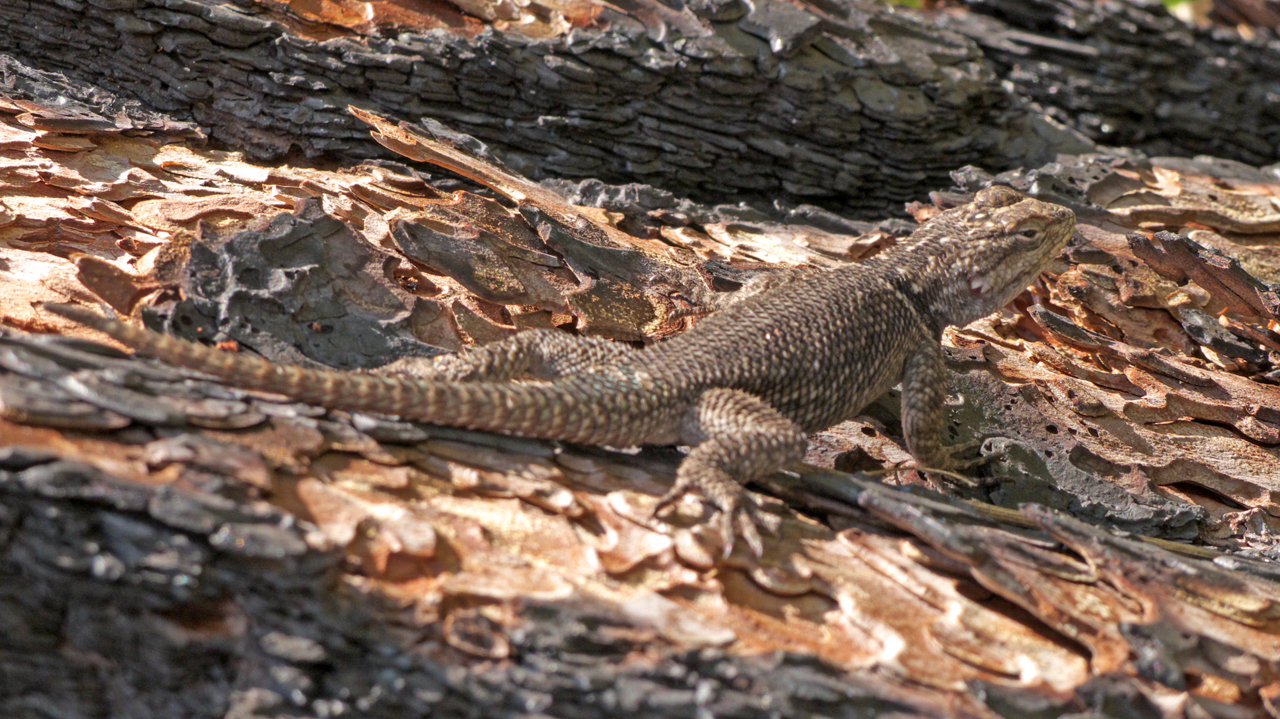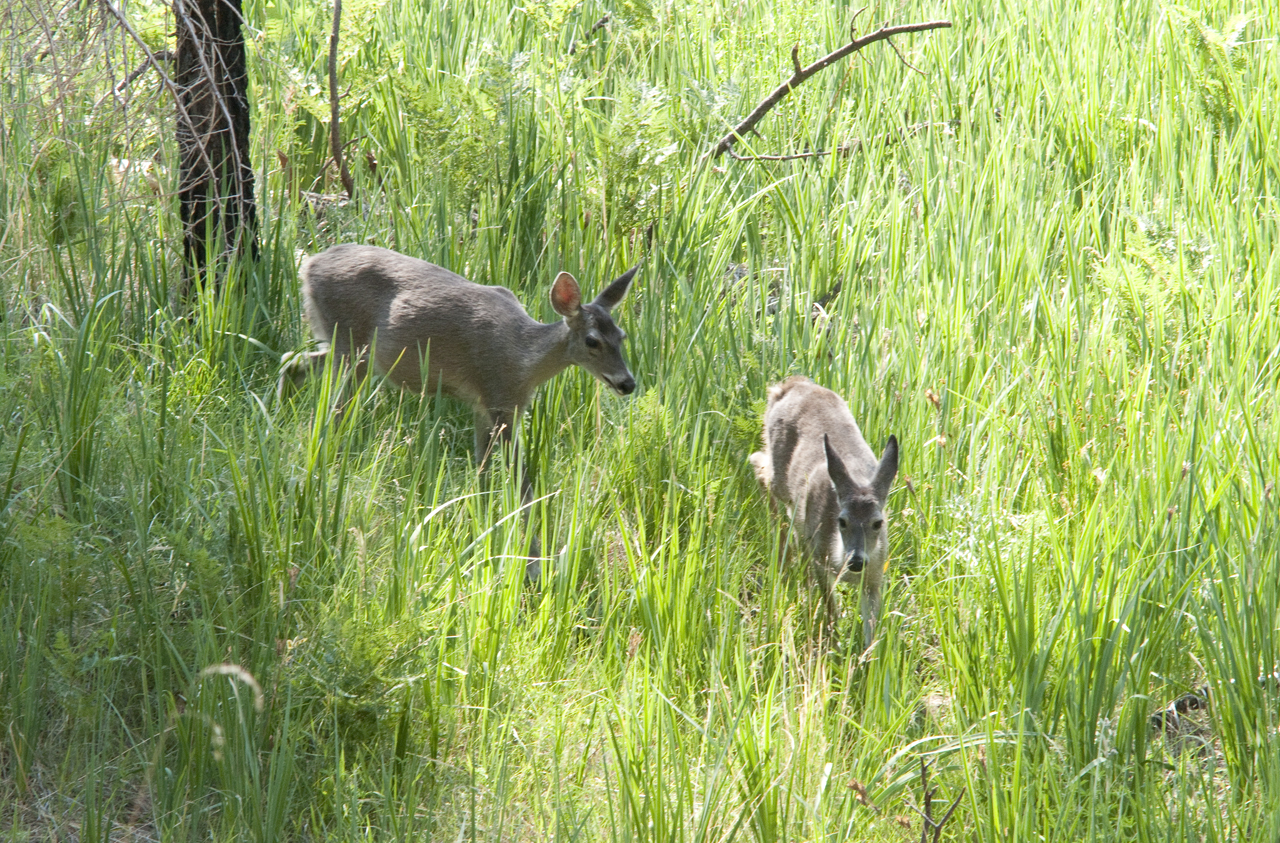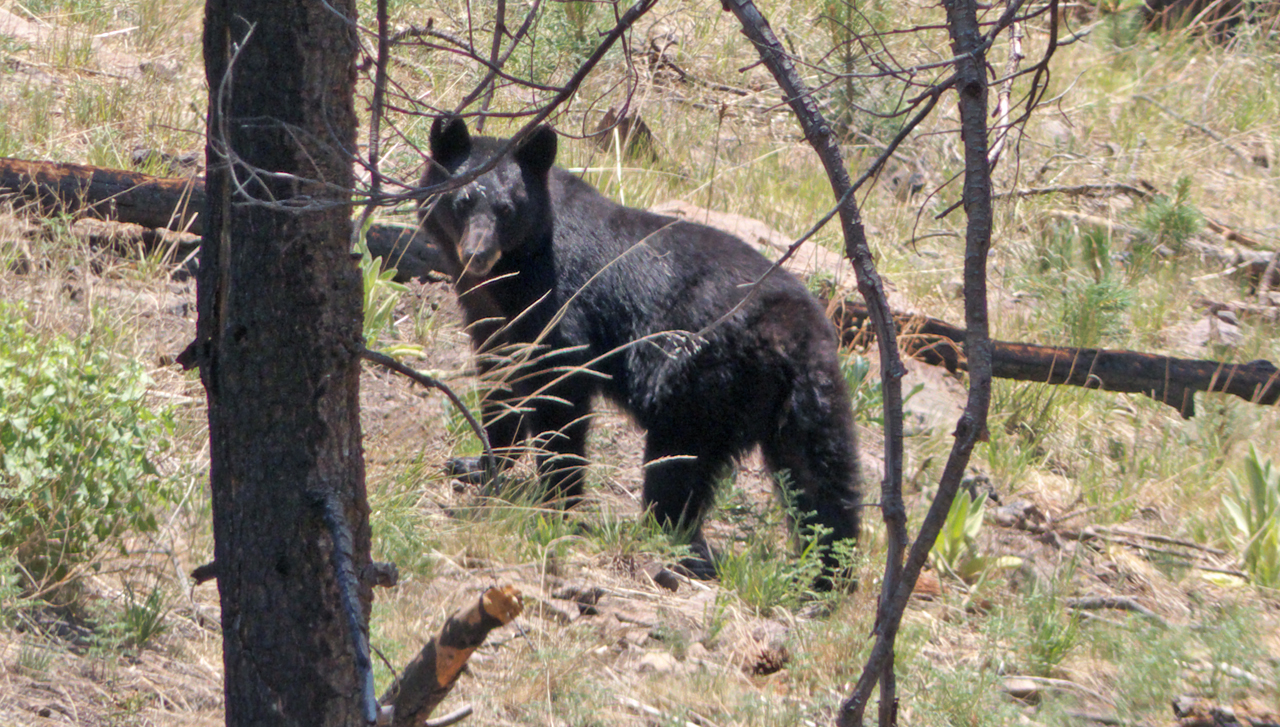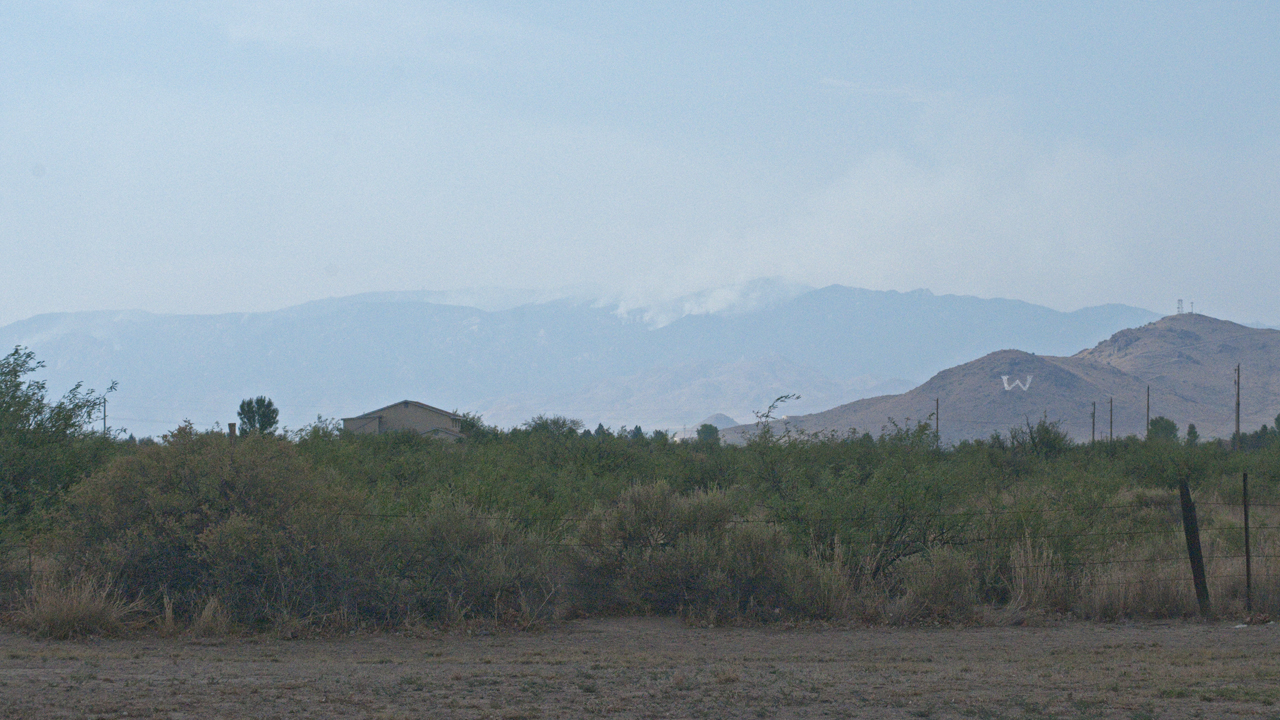Ham Radio Field Day (Sort Of)
June 22-25, 2017
Every year on the fourth weekend in June, ham radio operators nationwide participate in a "Field Day" to demonstrate their ability to send messages without the use of phone systems, internet or any other infrastructure that can be compromised in a crisis. Dennis and I typically celebrate by camping in the Chiricahuas or other high mountains — chosen not just because they are good radio locations, but to escape from the insufferable heat that envelopes the low desert this time of year. Invariably, we get caught in a thunderstorm, since the first of the monsoon storms always arrives in Arizona via the Chiricahua Mountains. Over time, we've come to believe that it's our job to meet the monsoon in the Chiricahuas and coax it back to Tucson. If we didn't meet it partway, maybe the monsoon would stay in the mountains?
Between June 19th and June 25th, Tucson International Airport registered 7 straight days with a high temperature of at least 109°. This is the third longest streak on record.
Wildfires were burning all over Arizona, and the air was choked with smoke. We could hardly wait to escape into the mountains! Given the extreme weather, all the other hams backed out, but Kit decided to join us!
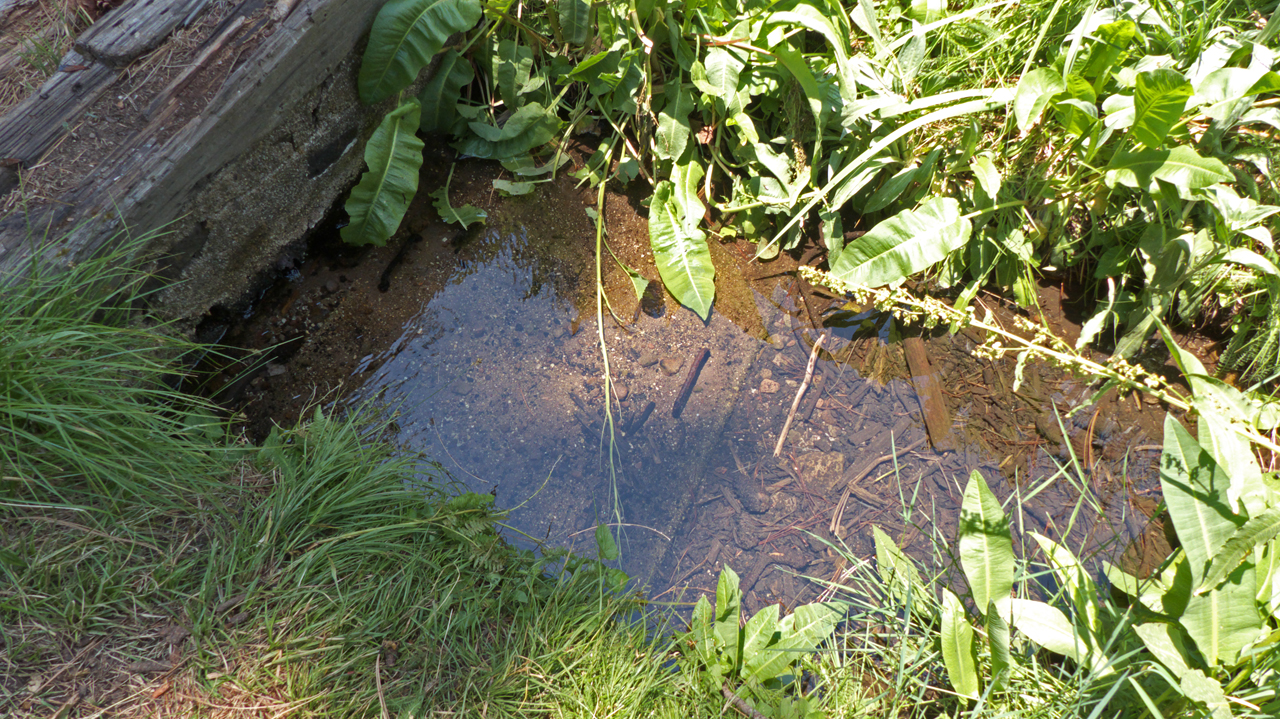
We left Tucson Thursday morning, stopping for lunch at the train car in Willcox and then caravaning to Barfoot Park. We chose this location because last year when we were camped on a knoll near Turkey Park a lightning strike shaved the bark off a tree 150 feet away from us. There were a few other campers on Thursday night, but noone at all for the next three days.

It was our first time camping at Barfoot, so we were surprised to find a large number of picnic tables scattered in the woods as well as an old heliport and several cement slabs. Barfoot Park is the former site of "Camp Victorio", a large boy scout camp. The camp was abandoned in the 1990s, apparently because of bears in the area. These days, Barfoot Park is an island of Ponderosa Pine, surrounded by ridges stripped bare by fire, the trees standing charred and naked, or tumbled down like so many matchsticks. An old jeep trail that used to connect to FR 357 is blocked off. The Ida Peak Trail has been relocated, but we turned back when in petered out in a badly burned area west of Barfoot Peak.
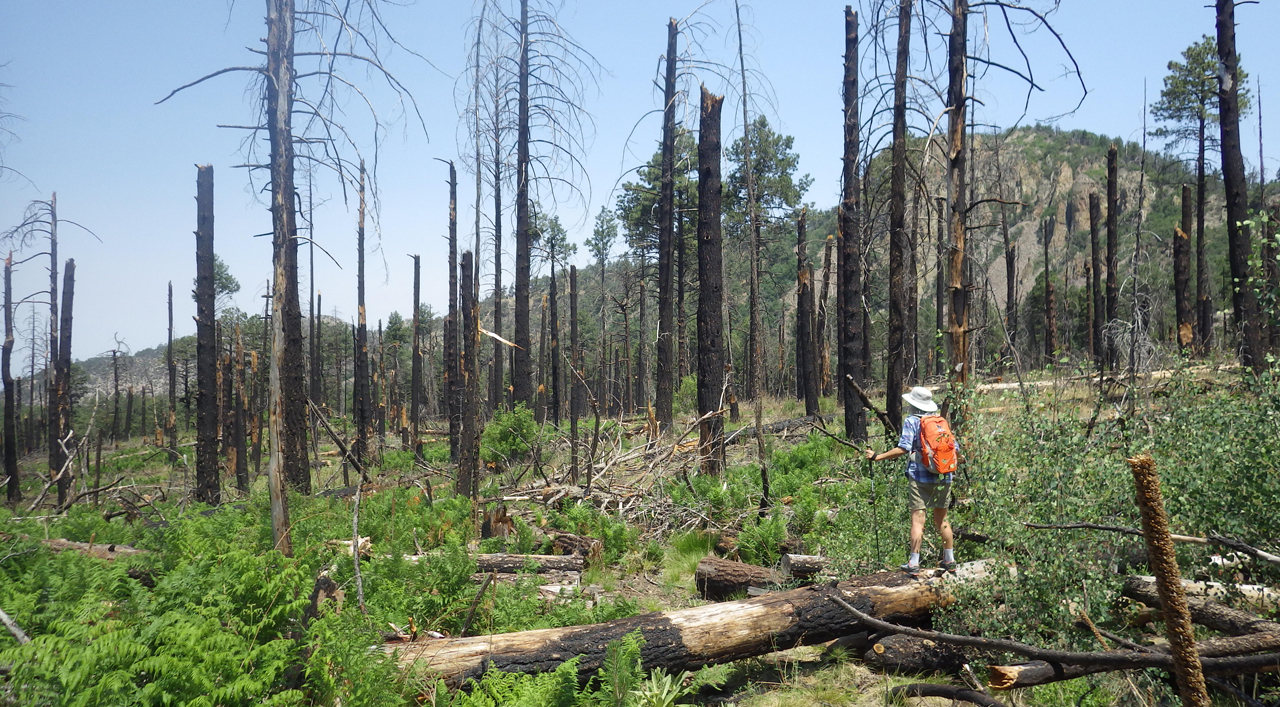
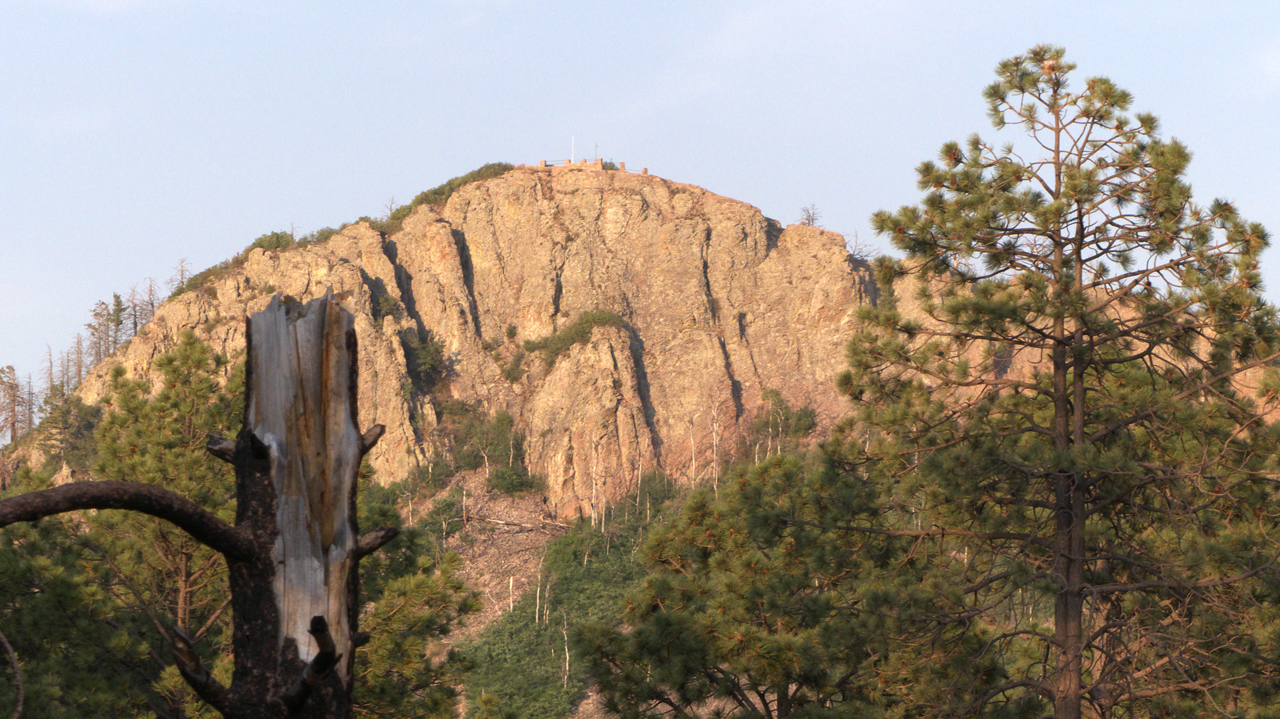
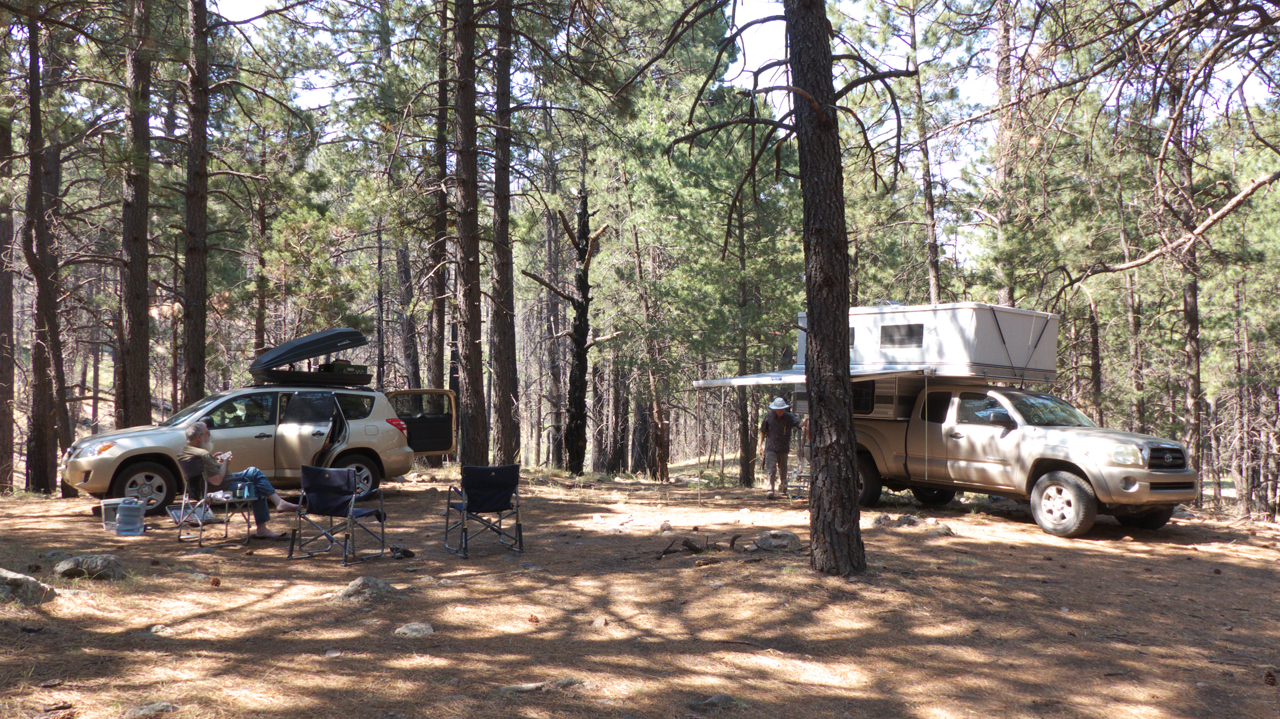
Friday night I awoke with a start. The air was suddenly thick with smoke. I stayed awaked for several hours, but eventually a cool breeze blew through the camp, and I fell back asleep. Later I would learn that a fire broke out that night just a few miles south of us, but it was quickly extinguished.


